White Wine and Cheese Pairings
White wine is one of cheese’s best friends. Sauvignon blanc pairs with so many foods, but what cheese goes with moscato? It’s time for a wine and cheese party!
Few foods go together better than wine and cheese. (Actually, a strong case can be made for beer and cheese pairings, but that’s a different story.) Wine and cheese have been inextricably linked for centuries, with good reason. Certain properties of wine, such as acidity, astringency, sweetness and others, complement the creamy, nutty, and pungent properties of cheese to create synergies of flavor in which the total is greater than the sum of the parts.

Of course, there’s a cheese for every wine, and some wines go better with some cheeses than others…but if you want nearly foolproof wine and cheese pairings, make sure you have white wine on hand.
Yes, yes, many of us love our big dry reds. And with all those antioxidants, they’re good for us! No argument here; we love our red wines, too. But the very thing that makes them dry—and the source of those antioxidants—is what makes them tricky to pair with cheese. It’s the tannin, a bitter, astringent compound found primarily in the skins of the grapes.
White wines have far fewer tannins than reds do, as tannins are concentrated in plant pigments. This is why you can’t age white wines as long in the cellar as you can reds: the antioxidants in red wine act as natural preservatives, and aging them awhile actually softens the tannins, making them less bitter. And while big, tannic reds are perfect fits for some cheeses (sharp Cheddar or pungent blue cheese, for example), they don’t work and play well with others. White wines, blissfully free of those oppressive tannins, are far more cheese-friendly.
Sauvignon Blanc Food & Cheese Pairings
Our discussion of food-friendly white wines starts with sauvignon blanc (soh-vinn-yohn blonk). Native to Bordeaux and the Loire Valley in France, this varietal is the major grape in white Bordeaux, and the parent grape to the famous red varietal cabernet sauvignon. (Sauvignon means “wild” in French.)
Sauvignon blanc food pairing offers many options due to its crisp, refreshing nature with substantial acidity and notes of lime and green leafy herbs. It pairs with almost anything, including chicken and other poultry, shellfish, smoked foods, and spicy or pungent foods like raw garlic. Also, its herbaceous green notes are usually perfect with side dishes containing green herbs like parsley, basil, rosemary, or cilantro.
Predictably, sauvignon blanc is excellent with many artisanal cheeses, but its favorites tend to be brick, Cheddar, Gouda, Havarti, Monterey Jack, Colby Jack, Muenster, Parmesan, and Swiss and other alpine-style cheeses.
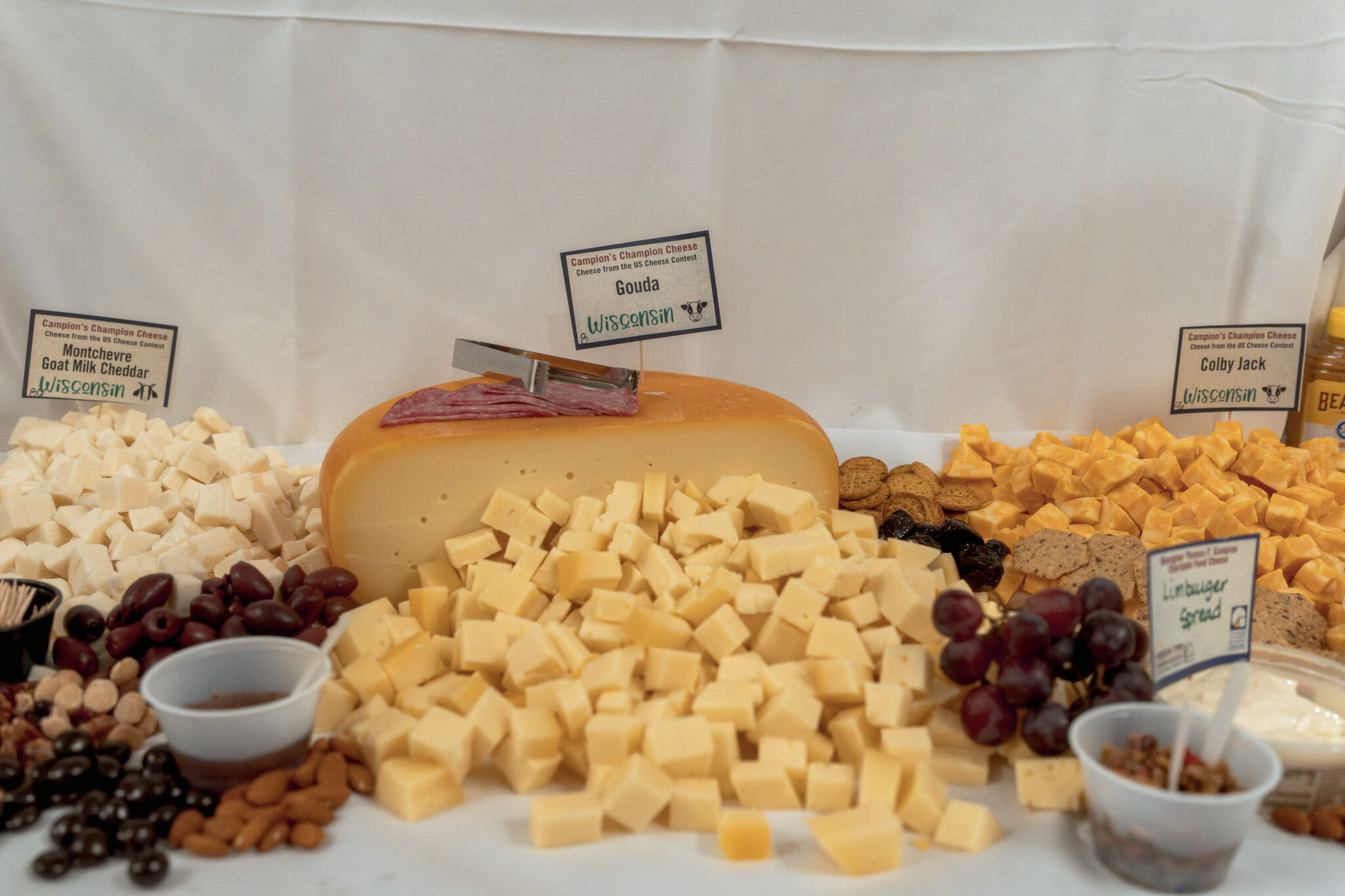
Pairing Chardonnay and Cheese
Chardonnay is a natural rival of sauvignon blanc. While sauvignon blanc is the predominant white grape of Bordeaux, chardonnay is king of the whites in Burgundy. Bold and complex, chardonnay is known for its notes of apple, pear, melon, and citrus. And because many chardonnays are aged in oak casks, they are often described as oaky or buttery for the flavor molecules they pick up from the barrel.
Chardonnay is as versatile as sauvignon blanc in cheese pairings, but really shines with Asiago, brick, Brie, butterkäse, Gouda, Monterey Jack, Parmesan, provolone, and Baby Swiss.
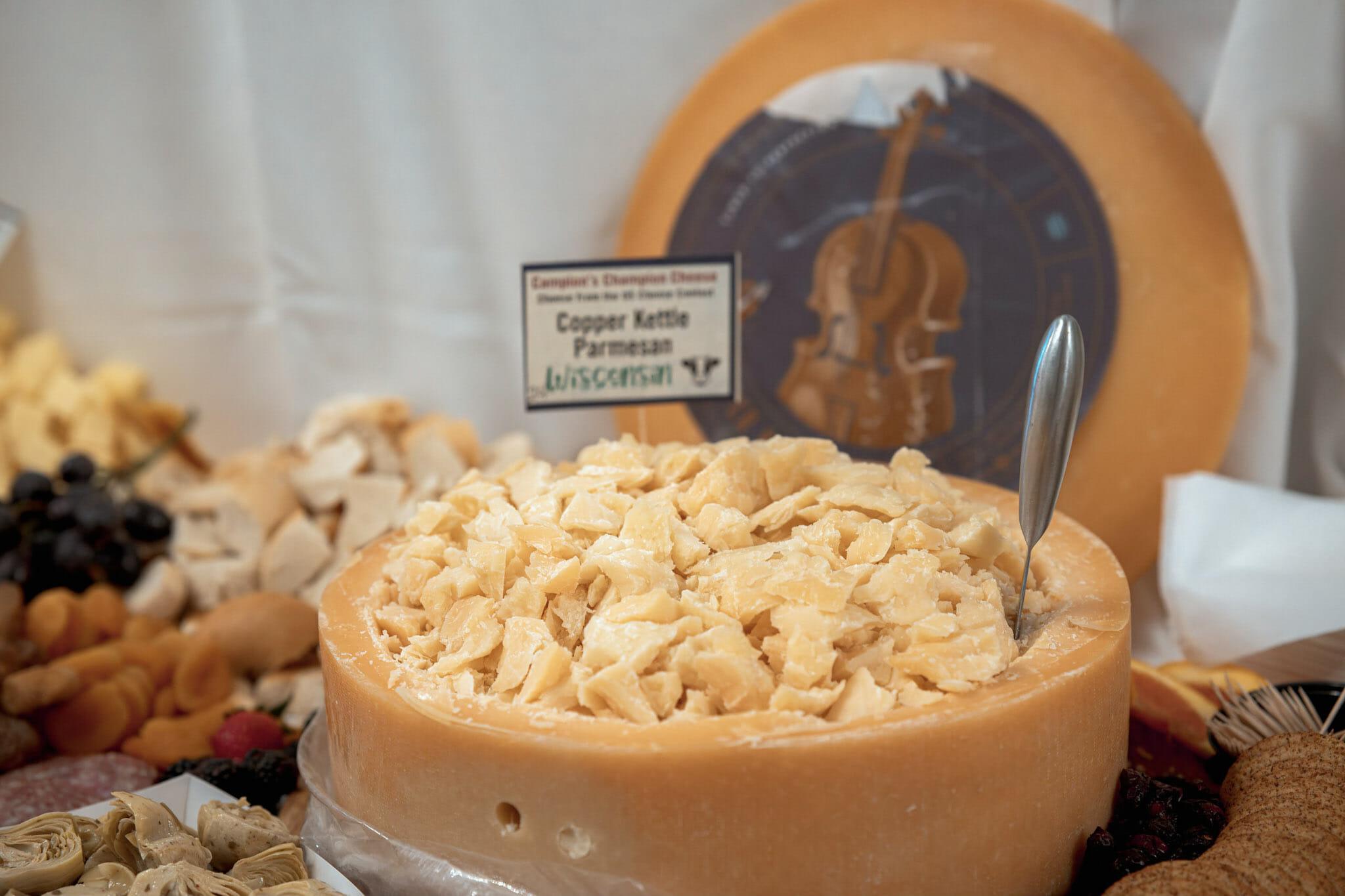
What Cheese Pairs Well with Moscato?
Ah, moscato: as trendy as it is sweet. Moscato (moh-scott-oh) is the Italian name for the muscat grape, from which Asti Spumante is made. Back in the day, a notoriously cheap wine called muscatel was made from this grape, but it was fortified with extra alcohol to make something close in strength to a sherry or port. It was the choice of many a “wino” seeking a cheap drunk, and sullied the reputation of muscat wines for years. Thankfully for those who love sweeter wines, muscat is back — but with a decidedly Italian accent.
Moscato wines tend to have stone fruit flavor notes (peach, apricot, nectarine), and go very well with blue cheeses, Parmesan and goat cheeses, as well as Brie cheeses and other triple-crème bries.
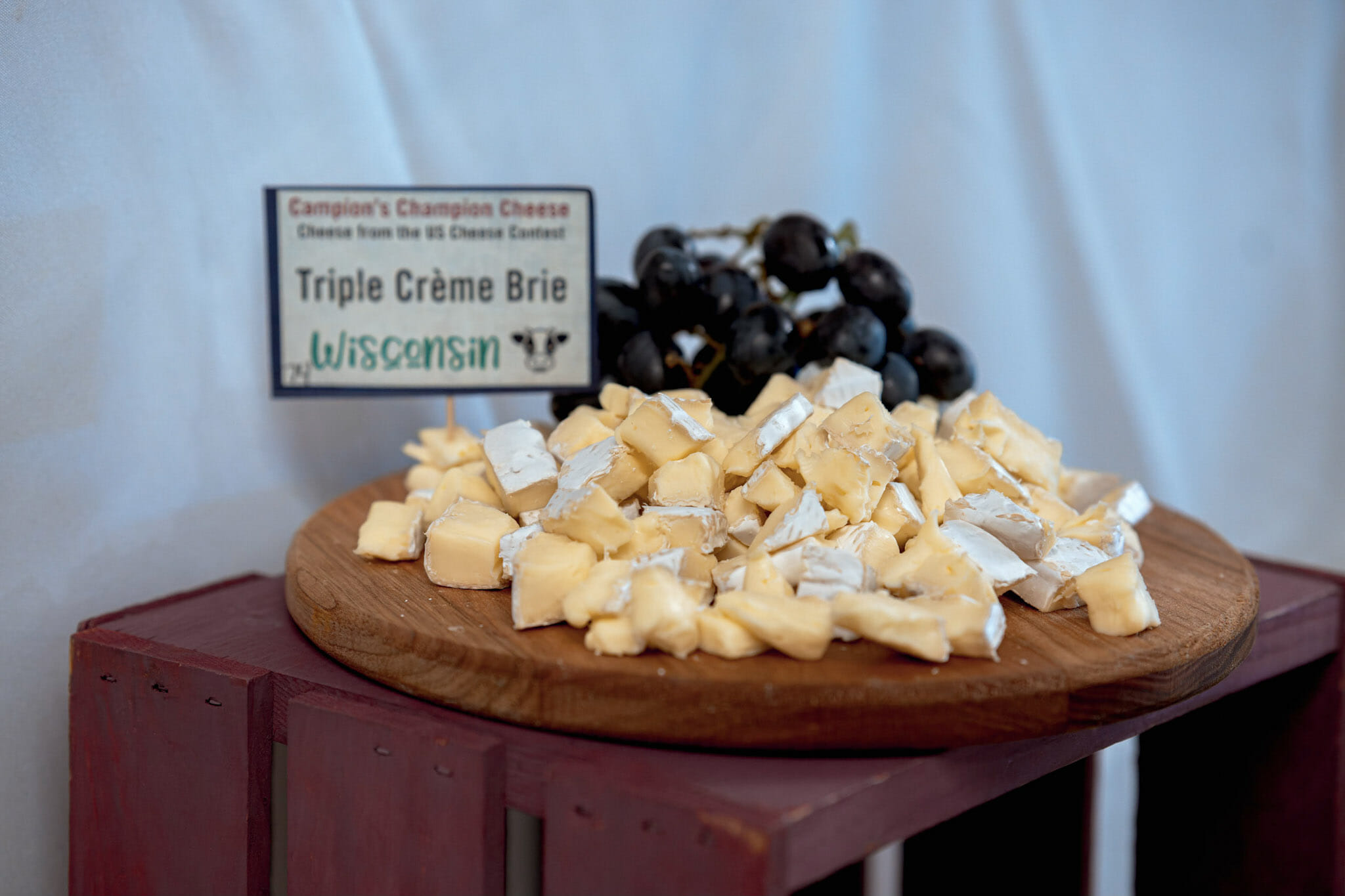
The Resilient Riesling – Cheese Pairings Galore!
Riesling is one of the most food-friendly grapes. While it has a reputation for being sweet, the wines made from riesling grapes range from dry to sweet, depending on the ripeness at which the grapes were harvested: dry (Kabinett) to off-dry (late-harvest Spätlese, slightly riper Auslese), to sweet dessert wines.
As a general rule, rieslings pair well with Swiss and other alpine cheeses, Asiago, blue cheeses, butterkäse, aged Cheddar, Colby, Gouda, Monterey Jack, Muenster, and Parmesan. If these cheeses all seem familiar from the above wines, that’s no coincidence. If you have a drier riesling (Alsatian or Kabinett), go with more of a sauvignon blanc food pairing; treat a Spätlese, New Zealand or Washington state riesling more like a chardonnay; and pair an Auslese or sweeter type as you would a moscato.
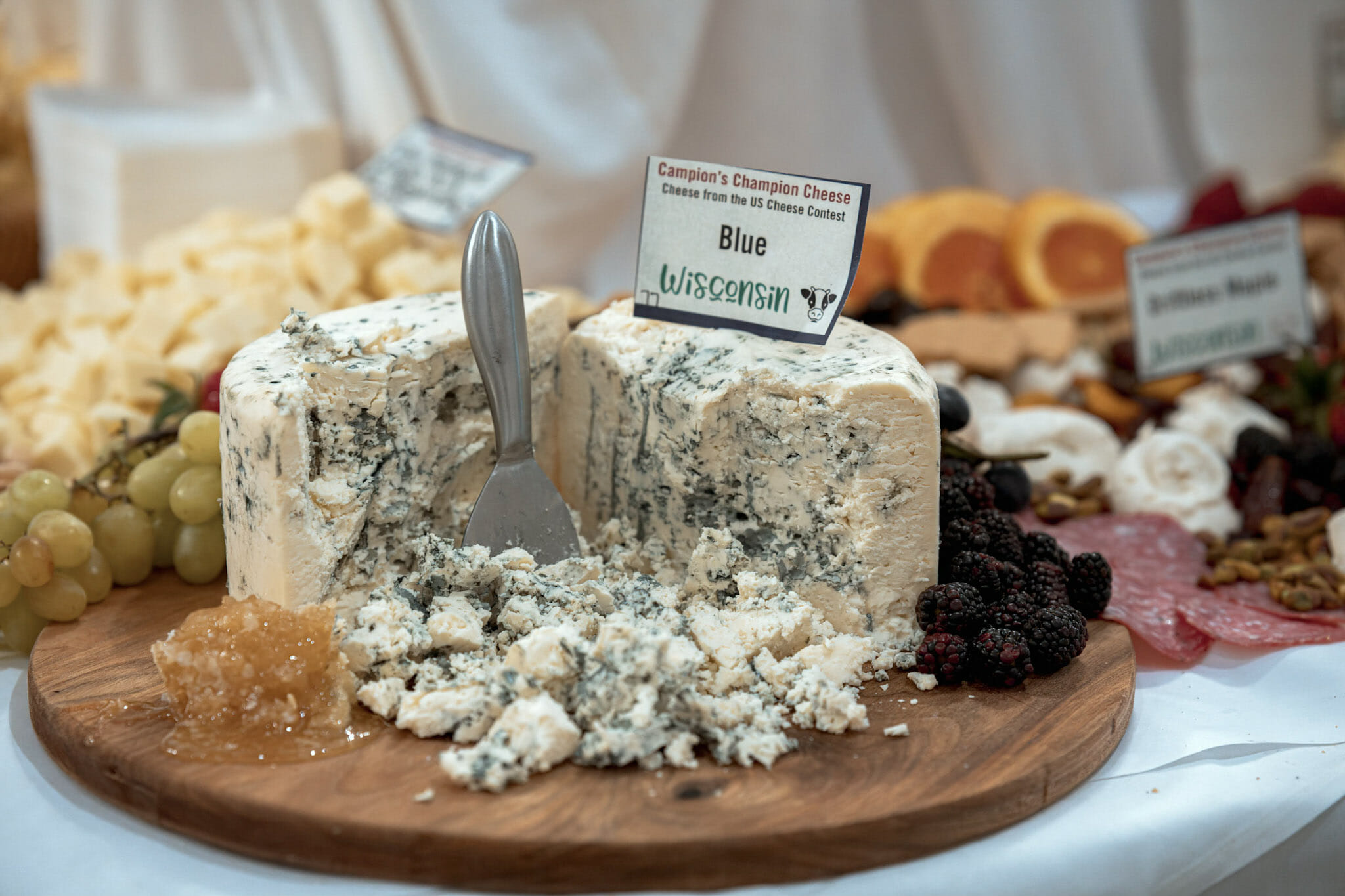
Other White Wine and Cheese Pairings
Chenin blanc
These are much the same pairings as those for riesling. Used to make the classic French Vouvray, chenin blanc (shen-nin blonk) originated in France’s Loire Valley and is also widely grown in South Africa. It runs the gamut from dry to semi-sweet, and its favorite cheeses are Brie, Cheddar, alpine-style and goat cheeses.
Pinot gris and pinot grigio
These wines share the same grape, related to the red grape pinot noir. (Noir is French for “black”; gris is French for “gray” and grigio is Italian for “gray”). This very light, crisp wine is citrusy with a gentle bouquet, and pairs well with Cheddar, Gouda, Monterey Jack, Muenster, Parmesan, and Swiss.
Viognier
Pronounced (vee-own-yay), it has a very floral bouquet and pairs well with mild blue and goat cheeses, Brie, Gouda and alpine-style cheeses.
White Bordeaux and White Burgundy
These are regional wines from France. While the major grape in each will likely be blended with some lesser-known varietals from the region, you can assume white Bordeaux is largely sauvignon blanc (and subject to sauvignon blanc food pairing guidelines), while white Burgundy is most—if not all—chardonnay.
Gewürztraminer
For those seeking a little heat, Gewürztraminer offers the perfect pairing with spicy cheeses such as Pepper Jack or Jalapeño Cheddar. The wine’s aromatic and slightly sweet characteristics counterbalance the spiciness, creating a unique and unforgettable taste experience.
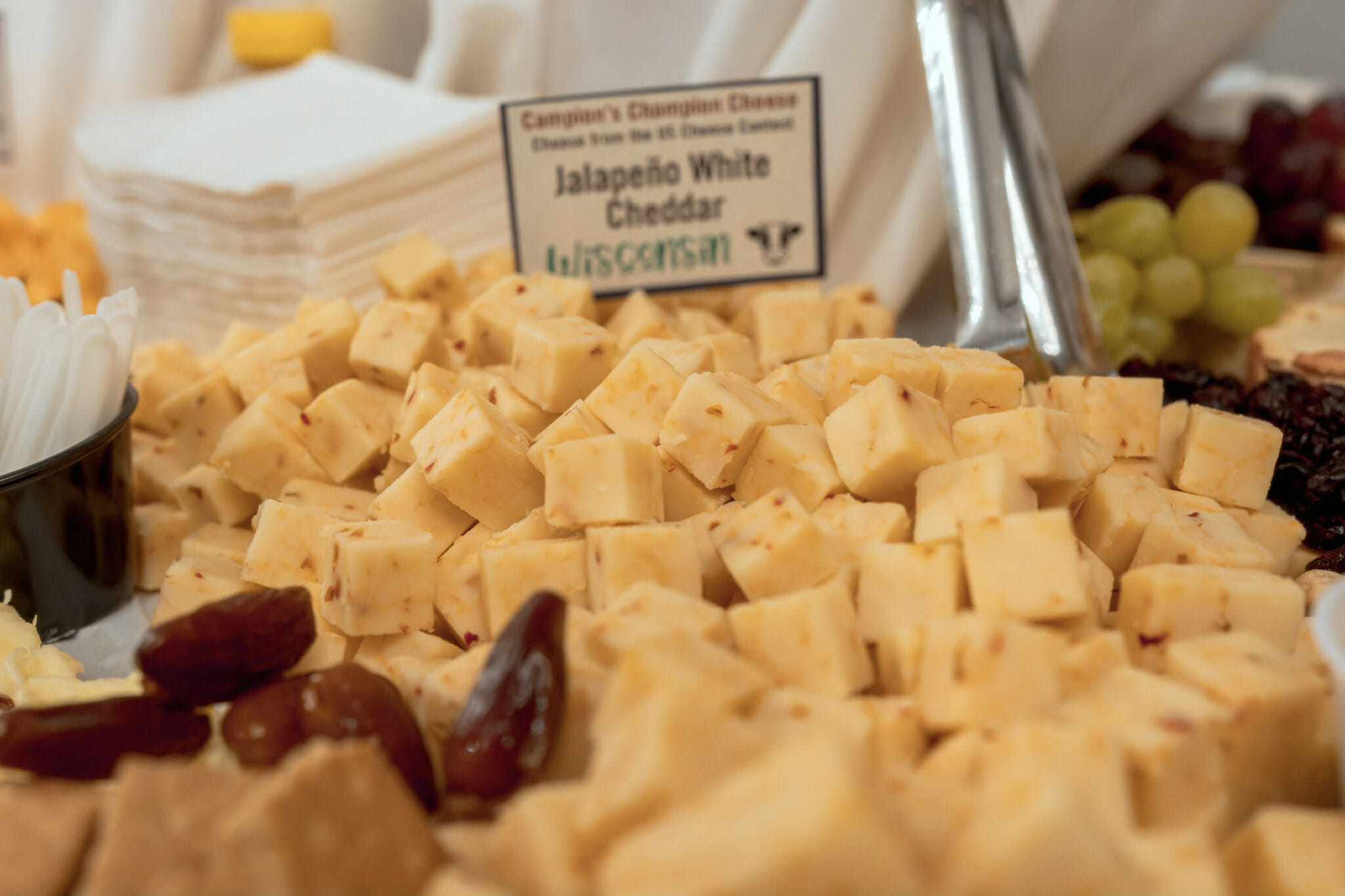
Summary
Mastering the art of white wine and cheese pairings opens up a world of culinary possibilities. By understanding the flavor profiles of different cheeses and selecting the right white wine varietals, you can create an exceptional tasting experience for yourself and your guests. Whether you prefer creamy, tangy, or bold cheeses, there is a perfect white wine waiting to enhance the flavors and elevate your cheese board to new heights. Pick two or three contrasting whites and four or five cheeses that marry well with them, add some fruit, crackers and summer sausage, and you’ll have a fine tasting party. Delight in the magic of these pairings and embark on a delicious journey of discovery.

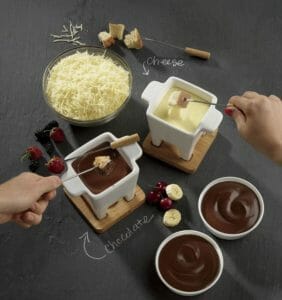
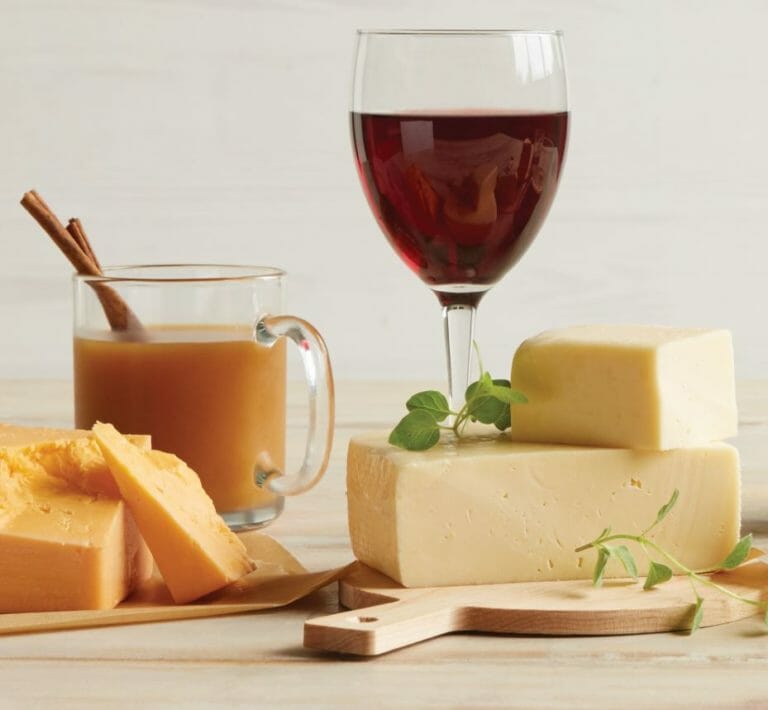

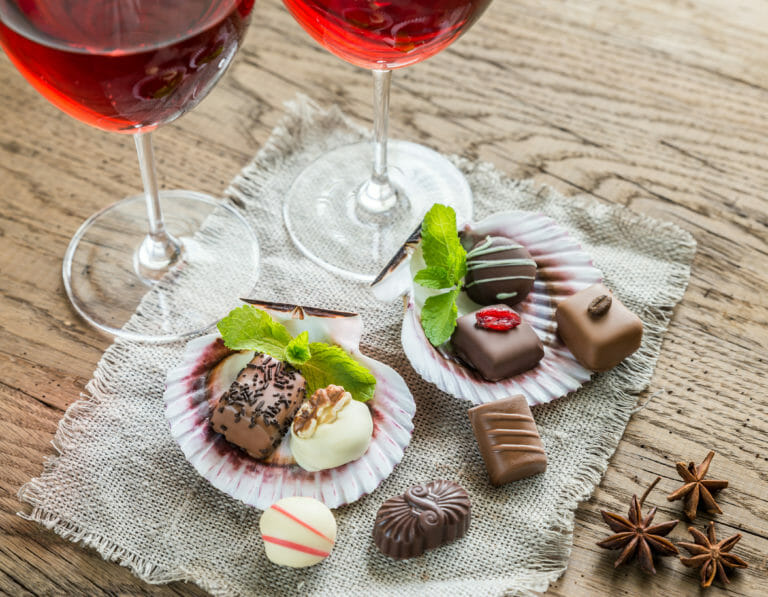
Comments (5)
Sauvignon Blanc Wine Guide | Best Varieties & Tips - wineriesling.com
[…] To discover more about wine and cheese pairings, check out this informative blog post on white wine and cheese pairings. […]
Nichole
Perfectly answered my question just the information I was looking for.
Melissa Pawless
This is very helpful. Thank you!
Barbara Brown
I enjoyed so much your “class” on what wine to serve with what cheese. This was enormously informative as it was always hit and miss…until now, that is.
Thank you..I will be ordering my Xmas gifts soon.
severson
Thanks so much for writing! We appreciate you stopping by, and wish you a happy – and delicious – holiday season!